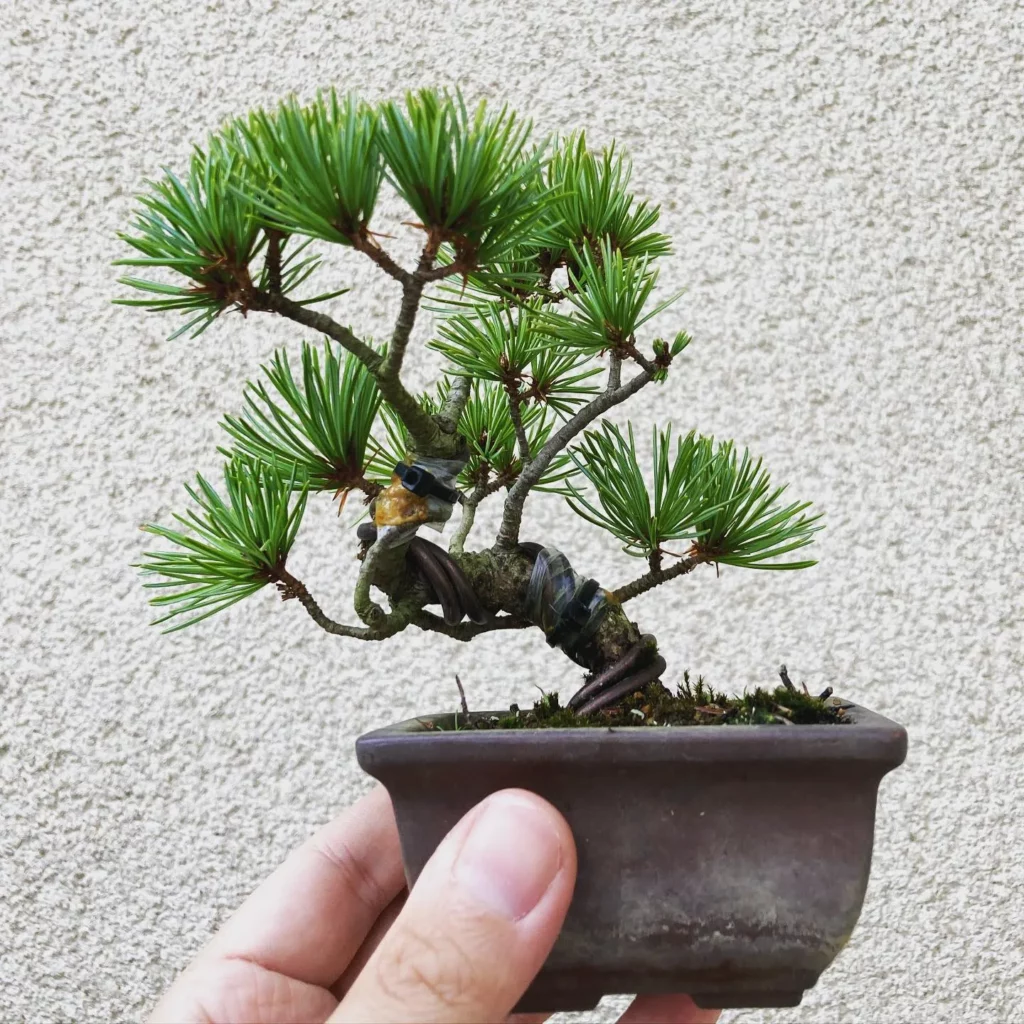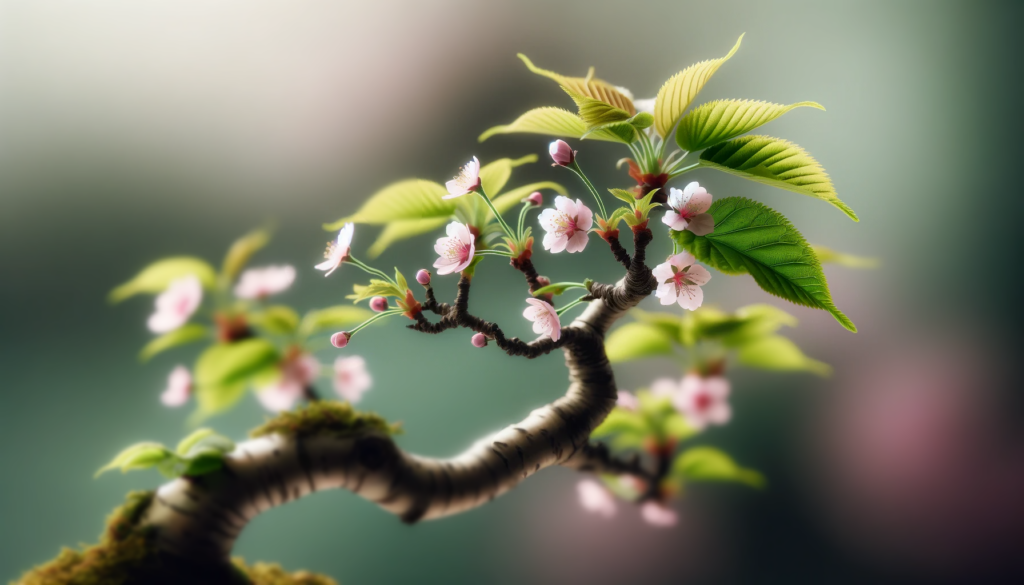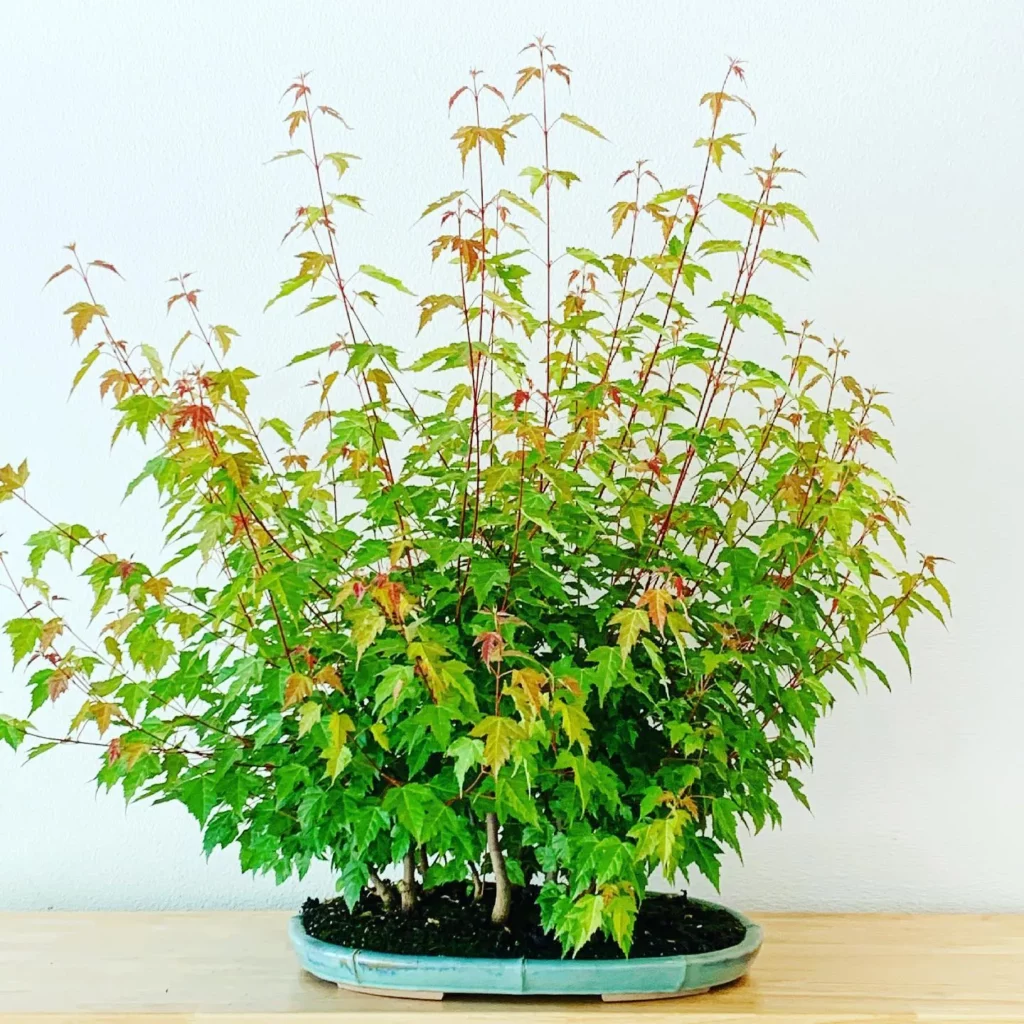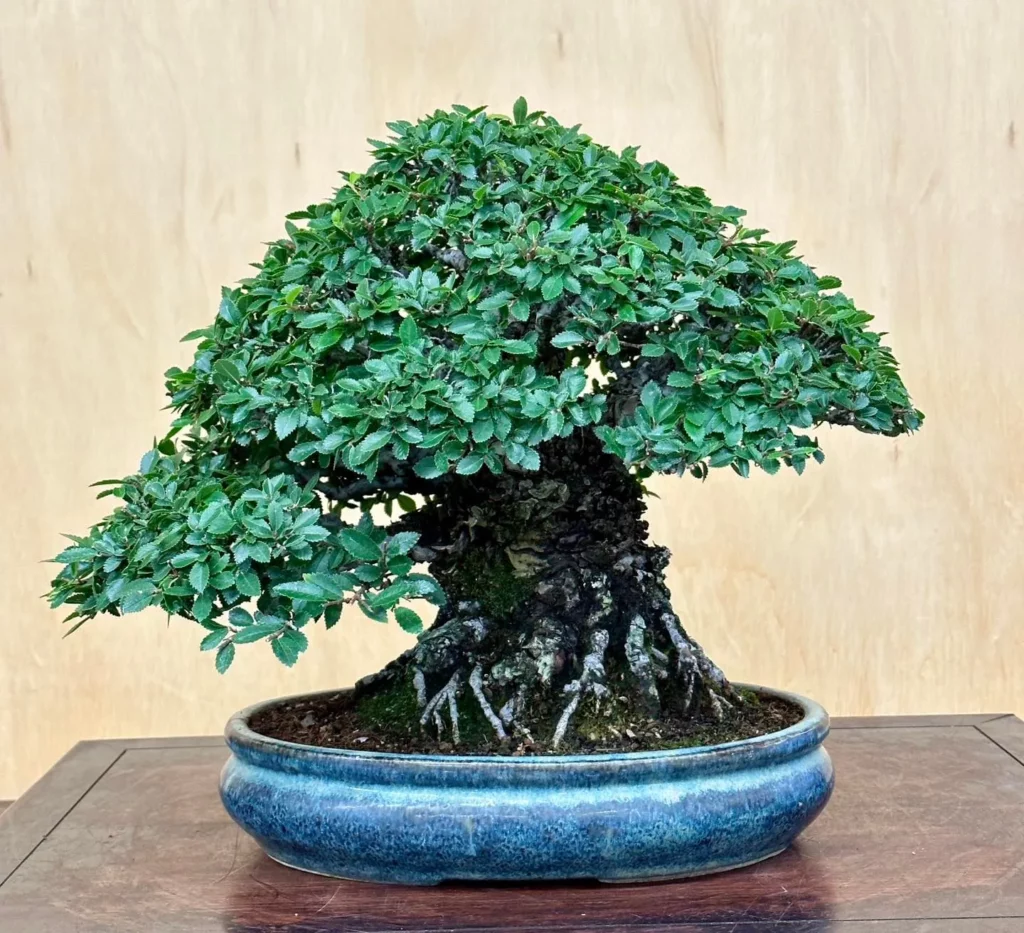Firethorn Bonsai is a visually captivating bonsai variety, known for its unique appearance that showcases the natural beauty of Firethorn. The bonsai exhibits thorny branches, glossy leaves, and colorful berries, making it a truly stunning addition to any garden or indoor collection.
As a compact evergreen shrub, Firethorn Bonsai typically grows to a height of 12 to 24 inches, making it an ideal choice for small spaces. The thorny branches add an intriguing texture and character to the bonsai, giving it a distinctive and eye-catching presence.
The Appearance of Firethorn Bonsai



The glossy leaves of Firethorn Bonsai further enhance its allure, reflecting light and creating a beautiful sheen. These leaves not only contribute to the bonsai’s aesthetic appeal but also play a vital role in its overall health and vitality.
One of the most enchanting features of Firethorn Bonsai is its colorful berries. The tiny berries start off as a delicate yellow hue and gradually transition to a vibrant orange shade in the fall. This burst of color adds a touch of vibrancy and liveliness to the bonsai, making it especially alluring during the autumn season.
The combination of thorny branches, glossy leaves, and colorful berries creates a harmonious and visually pleasing composition in Firethorn Bonsai. Its miniature size and intricate design make it an excellent choice for bonsai enthusiasts who appreciate the beauty and intricacy of nature.
Light Requirements for Firethorn Bonsai



For optimal growth and development, Firethorn Bonsai requires the right amount of light. To ensure the best results, provide your bonsai with bright, indirect sunlight. It is recommended to expose your Firethorn Bonsai to at least 4-6 hours of direct sunlight each day. This will not only promote healthy foliage but also encourage the production of abundant and vibrant berries.
However, it’s important to strike a balance and protect your bonsai from the harsh midday sun, which can potentially harm the delicate leaves. By finding the perfect balance between sufficient sunlight exposure and providing necessary shade, you can create the ideal light conditions to support the growth and vitality of your Firethorn Bonsai.
Watering Firethorn Bonsai



Proper watering is crucial for the health and well-being of your Firethorn Bonsai. While it prefers consistently moist soil, over-watering can lead to root rot and other problems. To ensure optimal moisture levels, follow these watering tips:
- Water deeply: When watering your Firethorn Bonsai, make sure to water deeply, allowing the water to penetrate the soil. This will encourage the roots to grow deeper and establish a strong foundation.
- Avoid shallow watering: Shallow watering can result in inadequate moisture for your bonsai. Instead of frequent but shallow watering, opt for less frequent, but deep watering sessions.
- Check moisture levels: Regularly check the moisture levels of the soil before watering. Stick your finger about an inch into the soil, and if it feels dry, it’s time to water.
- Consider the season: During the hot summer months, when evaporation rates are high, you may need to water your Firethorn Bonsai more frequently. Monitor the moisture levels and adjust your watering schedule accordingly.
- Avoid waterlogging: While your Firethorn Bonsai likes moisture, it’s important to avoid waterlogging the soil. Ensure that the container has proper drainage to prevent excess water accumulation.
Fertilizing Firethorn Bonsai



Proper fertilization is essential for the healthy growth and abundant berries of your Firethorn Bonsai. To provide the balanced nutrients it needs, consider using a slow-release pellet fertilizer. This type of fertilizer gradually releases nutrients into the soil, ensuring a steady supply for your bonsai.
When fertilizing your Firethorn Bonsai, timing is crucial. Apply the fertilizer in the spring, before new growth begins, and again in the early summer. This will provide the necessary nutrients to support optimal development and fruit production.
It’s important to carefully follow the instructions on the fertilizer package. Over-fertilization can lead to leaf burn and other issues, so use the recommended amount for your Firethorn Bonsai. Remember, slow and steady growth is healthier than a sudden burst.
To maintain balanced growth, consider using a fertilizer with balanced nutrients. This will provide an optimal combination of nitrogen, phosphorus, and potassium, supporting both foliage development and berry production. Look for a fertilizer labeled specifically for bonsai or fruiting plants.
Potting Firethorn Bonsai



Potting your Firethorn Bonsai correctly is crucial for its overall health and vitality. Here are some essential steps to follow:
- Choose a container with proper drainage holes to prevent waterlogging. This will ensure that excess water can freely escape, preventing root rot and other issues.
- Use a quality bonsai soil mix that is well-drained and rich in organic matter. This will provide the necessary nutrients and allow for proper aeration of the roots.
- When repotting your Firethorn Bonsai, it is best to do so every 2-3 years, usually in early spring. Repotting helps promote fresh root growth and rejuvenates the bonsai.
- Gently remove the bonsai from its current pot, being careful not to damage the roots. Trim any excessive or tangled roots to encourage healthy growth.
- Place a layer of fresh soil mix in the bottom of the new pot. Position the bonsai on top, ensuring that it sits at the proper depth. Fill the remaining space with the soil mix, gently pressing it down around the roots.
- Water the newly potted Firethorn Bonsai thoroughly, allowing the water to saturate the soil. This will help settle the soil around the roots and remove any air pockets.
Propagation of Firethorn Bonsai



Firethorn Bonsai can be propagated using two effective methods: cuttings and layering. Both techniques offer successful results in propagating this captivating bonsai variety.
1. Cuttings
One method of propagating Firethorn Bonsai is through hardwood cuttings, typically taken in late winter or early spring. Follow these steps:
- Select a healthy branch that is about pencil-thickness.
- Make a clean diagonal cut just below a node, taking a 6-8 inch cutting.
- Remove the lower leaves, leaving only a few at the top.
- Dip the cut end in rooting hormone to encourage root development.
- Plant the cutting in a well-draining rooting medium, such as a mix of perlite and peat moss.
- Place the cutting in a warm, bright location, ensuring it receives indirect sunlight.
- Keep the soil consistently moist, but not waterlogged.
- After a few weeks, roots should start to develop, indicating successful propagation.
2. Layering
Another effective method of propagating Firethorn Bonsai is through layering. This technique involves rooting a branch while it is still attached to the parent plant, promoting faster establishment of the new plant. Follow these steps:
- Select a low, flexible branch that can be bent towards the ground without snapping.
- Make a small incision on the underside of the branch, about halfway between two nodes.
- Apply rooting hormone to the incision to enhance root growth.
Growth and Development of Firethorn Bonsai


To ensure the optimal growth and development of your Firethorn Bonsai, regular pruning is necessary. Pruning should be performed in late winter or early spring, before new growth begins, or after the berries have fallen. By removing any dead, diseased, or damaged wood, as well as old canes that have produced fruit, you can promote new growth and fruit production.
Pruning not only helps maintain the desired shape of your Firethorn Bonsai but also encourages the overall growth and development of the plant. Shaping the bonsai through pruning allows you to create a visually appealing and aesthetically pleasing arrangement of branches and foliage.
When pruning your Firethorn Bonsai, it is important to use the proper tools such as sharp, clean pruning shears. Make clean cuts at a diagonal angle just above a leaf node or bud to promote healthy regrowth. Avoid leaving stubs or making uneven cuts, as this can lead to unnecessary stress or damage to the bonsai.
Benefits of regular pruning:
- Promotes new growth
- Encourages fruit production
- Maintains desired shape
- Improves overall aesthetics
Pests and Diseases of Firethorn Bonsai
Firethorn Bonsai, like any other plant, can be vulnerable to pests and diseases that can hinder its growth and overall health. It is crucial to be proactive and take preventive measures to avoid these issues. Regular inspections, good hygiene practices, and prompt treatment are essential in maintaining the well-being of your Firethorn Bonsai.
Here are some common pests and diseases that can affect Firethorn Bonsai:
Pests
- Insects: Common insects that can infest Firethorn Bonsai include aphids, spider mites, and scale insects. These pests can cause damage to the leaves and weaken the overall health of the bonsai.
Diseases
- Blight: Firethorn Bonsai can be susceptible to fungal diseases, such as blight. Blight can cause leaf spots, stem cankers, and defoliation if left untreated.
To protect your Firethorn Bonsai from pests and diseases, follow these preventive measures:
- Regular inspections: Inspect your bonsai regularly to spot any signs of pests or diseases. Look for changes in leaf color, wilting, or unusual growth patterns.
- Proper hygiene: Keep the bonsai clean and free from debris. Remove fallen leaves and prune any damaged or infected branches promptly.
- Prompt treatment: If you notice any signs of pests or diseases, take immediate action. Consult online resources or bonsai books for specific treatments and follow them accordingly.
Conclusion – Ignite Your Garden’s Allure with Firethorn Bonsai
Firethorn Bonsai is a captivating variety that brings the beauty of Firethorn to a smaller scale, making it a perfect addition to your garden or indoor space. With its vibrant berries, lush foliage, and stunning appearance, Firethorn Bonsai is sure to add a touch of natural allure to any setting.
To ensure the successful growth and maintenance of Firethorn Bonsai, it is important to follow expert care tips. Pay attention to its appearance, with thorny branches, glossy leaves, and colorful berries, and make sure to provide sufficient light, as Firethorn Bonsai thrives in bright, indirect sunlight.
Proper watering, fertilization, and potting are essential for the health and vitality of Firethorn Bonsai. Remember to water deeply and infrequently, use a balanced slow-release fertilizer, and pot it in a container with proper drainage. Additionally, you can propagate Firethorn Bonsai through cuttings or layering, and shape its growth through regular pruning.
Lastly, be aware of potential pests and diseases that may affect Firethorn Bonsai. Regular inspections, proper hygiene, and prompt treatment can help keep your bonsai healthy. By following this comprehensive care guide, you can enjoy the vibrant berries and lush foliage of Firethorn Bonsai, creating a captivating centerpiece for your garden.
FAQ
What is Firethorn Bonsai?
Firethorn Bonsai is a captivating bonsai variety that showcases the beauty of Firethorn in a smaller scale. It is known for its vibrant berries and lush foliage.
How does Firethorn Bonsai look?
Firethorn Bonsai exhibits thorny branches, glossy leaves, and colorful berries. It is a compact evergreen shrub that typically grows to a height of 12 to 24 inches.
What are the light requirements for Firethorn Bonsai?
Firethorn Bonsai thrives in bright, indirect sunlight. It requires at least 4-6 hours of direct sunlight daily to produce an abundant crop of berries. However, it is important to protect the bonsai from harsh midday sun.
How should I water Firethorn Bonsai?
Firethorn Bonsai prefers consistently moist soil, but it should not be waterlogged. It is important to avoid over-watering, as it can lead to root rot and other problems. The soil should be watered deeply and infrequently, rather than frequently but shallowly.
How should I fertilize Firethorn Bonsai?
Firethorn Bonsai benefits from regular fertilization during the growing season. A balanced, slow-release pellet fertilizer is recommended to promote healthy growth and abundant berries. Fertilizing should be done in the spring and early summer.
How should I pot Firethorn Bonsai?
Firethorn Bonsai should be potted in a container with proper drainage to avoid waterlogging. It is recommended to use a well-drained and organic-rich bonsai soil mix. Repotting should be done every 2-3 years.
How can I propagate Firethorn Bonsai?
Firethorn Bonsai can be propagated through methods such as cuttings and layering. Hardwood cuttings taken in late winter or early spring have a high success rate. Layering is another propagation method that can be used for Firethorn Bonsai.
How should I promote the growth and development of Firethorn Bonsai?
Firethorn Bonsai requires regular pruning to maintain its shape and encourage new growth. Pruning should be done in late winter or early spring before new growth begins, or after the berries have fallen.
How can I prevent pests and diseases in Firethorn Bonsai?
Firethorn Bonsai can be susceptible to pests and diseases. Regular inspections, proper hygiene, and prompt treatment are crucial for controlling pests and diseases. Consult online resources or books for specific treatments.
How can I ignite my garden’s allure with Firethorn Bonsai?
By following expert care tips on appearance, light requirements, watering, fertilizing, potting, propagation, growth, and development, as well as managing pests and diseases, you can enjoy the fiery berry beauty of Firethorn Bonsai in your own gardening endeavors.




